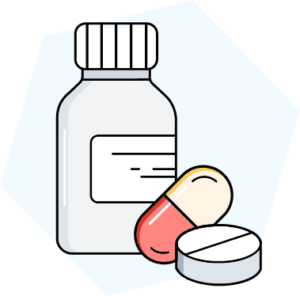How Have Healthcare Costs Increased With Inflation?
Healthcare costs have steadily increased alongside inflation. The average consumer spending on healthcare — including insurance and services — rose to $5,850 annually by the end of 2022 from $5,177 in 2020, or an increase of 12%. The average household spends around 8% of household income on healthcare each year.
This is part of a broader, overall rise in costs. Since 2000, the price of medical care has increased by 114%. Typically, medical care prices increased between 1%-5% during this period for this category, which includes medical services, insurance, drugs, and medical equipment.
Inflation has slowed somewhat. Between June 2022 and June 2023, medical prices increased by less than 1%. However, inflation still afflicts specific categories more than others — medical equipment costs rose by almost 10% in the same period. In the 12 months before August 2023, medical care commodity costs increased by 4.5%.
These increases stem from various factors, including:
- Increased life expectancy and higher resulting long-term healthcare costs
- Production issues and demand for medical equipment
- Rising wages resulting from a shortage of medical professionals
While costs have increased, there are a variety of strategies consumers can use to save money.
Table of Contents
Our Top Tips For Maximizing Your Health Insurance For Lower Costs
The average consumer has little control over inflation’s upward rise as larger forces are at play. However, there are steps you can take to lower your out-of-pocket healthcare costs.
Choose Generic and OTC Medication

Generic medications contain the same active ingredients as name-brand medications but cost less. Not all medicines are available in generic forms. Ask your physician if there’s a generic medication you can substitute for your more expensive name-brand medicine or another lower-cost drug that could replace your more expensive name-brand medication.
You can also apply the same principle to over-the-counter (OTC) medications. For example, you can choose the store brand’s pain reliever versus the name-brand pain relief medication.
Other ways to save on medications include:
- Using mail-order pharmacies
- Enrolling in a pharmacy’s discount program
- Signing up for a drug discount card
Raise Your Deductible
Your deductible is the amount you pay each year before your insurance kicks in. Raising your deductible increases your responsibility for the year’s financial healthcare costs and typically provides you with lower premiums.
High-deductible plans can come with a Health Savings Account (HSA). You can put pre-tax money for health care expenses into a Health Savings Account or Flexible Savings Account if your employer offers these accounts. The funds in these accounts can be withdrawn to help cover medical expenses. HSA plans are also typically available on the Healthcare Exchange.
These plans can help offset healthcare costs, particularly if you don’t spend much on healthcare. For example, you may benefit from a high deductible, low premium plan if you do not have chronic conditions or issues and rarely visit the doctor.
Utilize Preventative Care

Preventative care includes the services and screenings that help catch health problems early. Early detection often leads to lower costs overall and better outcomes for common chronic diseases such as arthritis, cancer, diabetes, and obesity, which add up to billions in expenses annually.
Preventative care typically includes tests, vaccines, and annual checkups. Most plans offer preventive care for free, without requiring copays or coinsurance or first meeting the deductible.
The specific free coverage depends on your age and sex. For example, women can access 27 specific screenings and services including support for breastfeeding and pregnancy and breast cancer screenings. Children can access 29 free preventative services.
Take Advantage of In-Network Providers
Some health insurance plans give you the choice between in-network providers and out-of-network providers. In-networks providers have a contract with your insurance plan and charge lower rates overall. Out-of-network providers did not sign a contract with your plan, so you may be charged higher coinsurance.
This choice is often seen in point-of-service (POS) plans and preferred provider organizations (PPOs). Plans that only use in-network providers are health maintenance organizations (HMOs) and exclusive provider organizations (EPOs). You may find lower ongoing costs associated with HMO and EPO plans due to the reliance on in-network providers.
Another way to lower your costs is proactively contacting your plan to request exceptions when necessary. For example, if you need an out-of-network specialist’s services not otherwise available, you may be able to ask for care to be covered like in-network care.
Consider Opting for an Alternate Plan
Changing your healthcare plan during open enrollment may allow you to save money. You’ll need to research to compare projected costs based on your unique circumstances.

For example, if you rarely use medical services, an in-network-provider-only HMO may better fit your budget. These plans typically cost less than other plan types. You can boost savings by combining the HMO with a high-deductible HSA plan option. However, ensure you have enough funds to pay for any unexpected expenses, and an in-network hospital is nearby in the event of an emergency.
Other options include:
- Opting for an Affordable Care Act (ACA)plan. Depending on your household income, you may qualify for a premium-lowering tax credit. If you apply the tax credit to your premium, you may pay less monthly for your insurance.
- Switch to a spouse’s plan if it’s more affordable.
- Sign up for Medicare if you’re 65 or older.
Request Itemized Bills
Medical billing, collections, and credit reporting are complex, confusing, and may contain errors.
Therefore, consumers should closely review medical bills to ensure items are accurate, and you receive the treatments indicated. If you do not recognize a treatment or billing item, ask your provider to help explain the treatment.
In some cases, you have special consumer protections regarding medical bills. For example, the No Surprises Act says insured patients should not get an unexpected emergency service bill from a healthcare facility you did not know was out-of-network. If you face this situation, you can appeal or submit a complaint.
Get to Know Your Policy
While it’s a lot of fine print, reviewing your policy can help you save money. Here are a few items to check:

- Examine your coverage: Plans change over time, so it’s wise to know where the nearest in-network physician, pharmacy, and emergency room are located and if better options are available.
- Review urgent care costs: Compare the price of a regular provider visit, urgent care clinic, and emergency room visit. When not in a stressful situation, seeing the costs can help you prepare to make a wise financial decision if not in a life-threatening emergency.
- Look for free and discounted services: For example, many health plans offer gym membership discounts, which can help boost your health and lower long-term expenses.
Putting It All Together
Healthcare — including insurance premiums, copays, medications, and other costs — can add up fast. Ongoing preventative care and self-care steps can help ensure you’re healthy overall. Losing or maintaining a healthy weight, exercising regularly, and avoiding smoking and heavy drinking can help you prevent expensive, chronic conditions.
These approaches can help you take charge of your health without running up expensive hospital charges. Don’t forget to be a savvy consumer as well. Investigate your plan’s network of physicians, coverage and freebies; make sure bills are accurate. If necessary, shop around for a new plan that better fits your budget and needs.
